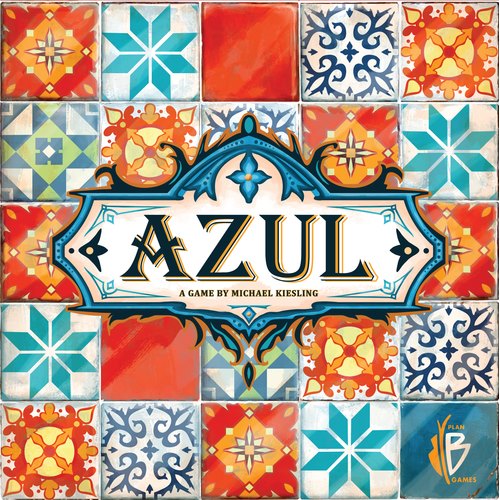
If you’ve ever tiled a bathroom or kitchen, you’ll probably appreciate that it’s not really the most fun activity you could carry out, so when Azul arrived with its basic premise of decorating a wall with brightly coloured tiles I really hoped the game itself would be more fun.
Good news: it is. Definitely.
The first thing I noticed when opening the box was the quality of the components. Chunky tiles and well laid out game boards are all present and correct, and coupled with a high quality bag to keep the tiles in during the game you can see a lot of care went into selecting the materials for Azul. And it really helps; handling the tiles during a game feels good and there’s no concern about them bending or getting damaged. Given that they spend a lot of time being flicked around inside the cloth bag it’s great to not have to worry about treating them overly gently. There’s a brief but easy to understand set of rules, letting you crack on with the game without much explaining to those who haven’t played.
One thing I’d say about the rules though – it’s worth reading all of them before you start your first game. We tried our first game out following the rules bit by bit, and it was only at the end when the scoring was worked out that we realised there were other ways to score points at the end, such as lining up your tiles in a certain way, or having all of a certain tile on your wall. No huge problem, at least we knew next time, but it did make some of our early strategic calls a bit irrelevant.

The basic idea though is to pick up certain tiles from the circular mini-boards in the middle of the table and place them onto your board. Each row of tiles can only contain one tile design, and if you end up picking up more than you can place then those tiles fall to the floor and lose you points later. Selecting your tiles is as simple as choosing one of the circles and taking all of one tile design from it, leaving the others in a separate pile on the table along with the other rejected tiles. You can, if you wish, take tiles from this discarded set (and indeed, later in your turn you’ll be forced to) so there are a few different ways to bolster your tile collection. Once all of the tiles have been taken you can move one tile from any completed row onto your wall and get rid of the rest of the row. Any incomplete rows stay put. More tiles are dished out, and the sequence repeats until someone has a full line of tiles one their wall.
With the rules so simple then, how does this become such a battle of wills? Well, that soon becomes clear too. All of the player boards are easy to see, so you can also easily work out what tiles they might be after. You can easily attempt to derail their efforts by taking tiles that they’ll need, but if you don’t have anywhere for them to go then you’ll end up losing points, so are you better off building up points or crippling their efforts? Not only that, do you try and get as many tiles onto the wall as possible to pick up some early points, or play the long game and hope you’ll manage to form a few completed columns, or a complete set of the same tile to score big when the game has finished?
Whichever way you go it’s a tense moment when the scores are being added up, and apart from one game where my efforts were constantly screwed up by the tiles which were randomly picked out of the bag the final scores were always close, even when we had 4 people playing. It’s also certainly one of those games you can get out when you haven’t got too long to play, the rules are a piece of cake to understand and the games themselves aren’t overly long. Whether you can stop at one game or feel the need to try and get your revenge on the winner remains to be seen, but it’s certainly a very enjoyable game and worth looking out for if you’re after something with some light strategy and a gentle edge of competition.

Leave a Reply